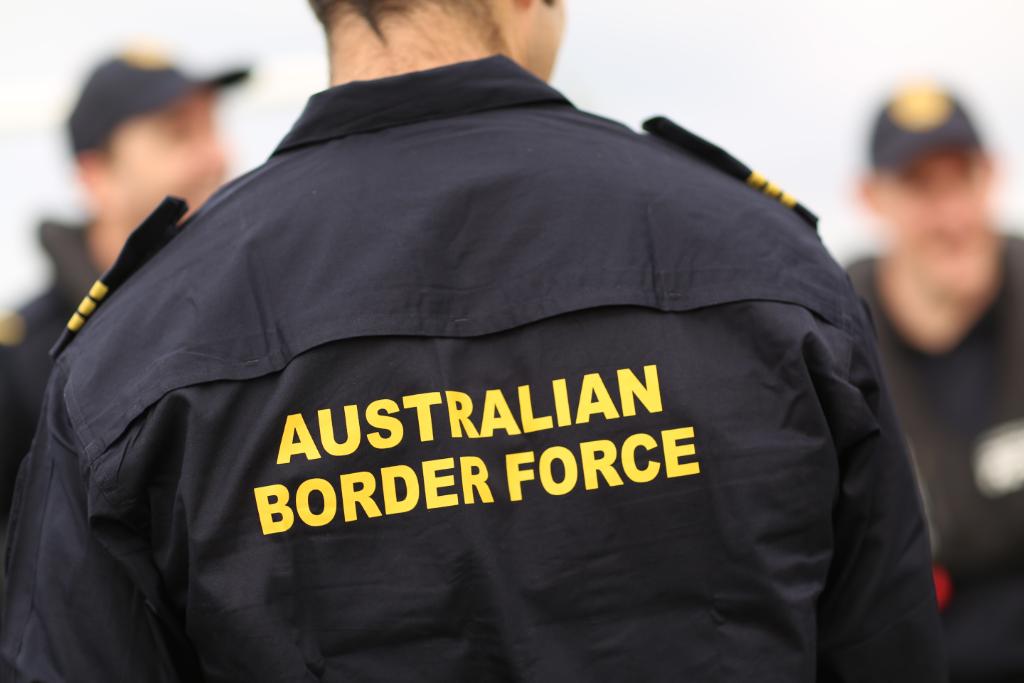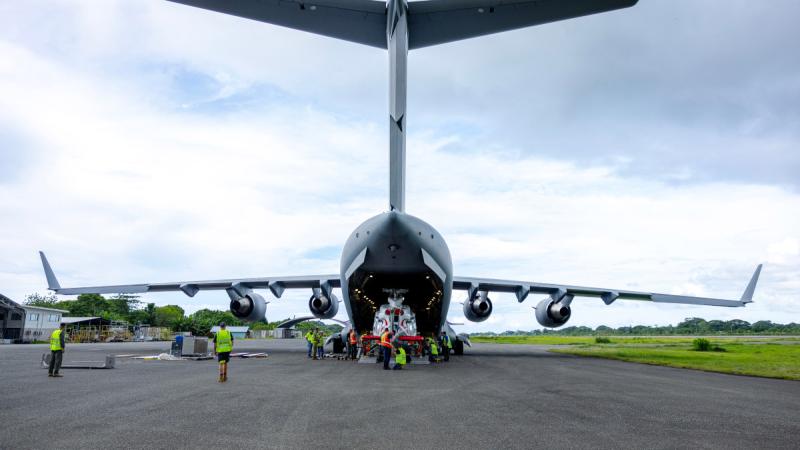Air Combat Group (ACG) trialled a temporary shelter to protect and conceal aircraft from explosives and surveillance at RAAF Base Williamtown in October.
The trial aimed to inform Air Force of future dispersed aircraft revetment solutions in support of agile operation concepts with the use of alternative passive defence methods and materials.
Aircraft revetments are open-air structures intended to shield parked aircraft from discovery, blast and fragmentation damage.
The ability to construct them quickly and cost effectively – and move them to different locations with some agility – provides a critical extra capability to Air Force in protecting its fast jet assets and confusing potential aggressors.
ACG Director of Logistics Capabilities Group Captain Jason Dean explained the rationale behind the testing and evaluation.
“The development and validation of a dispersed ACG aircraft revetment that can be repeated at scale across northern air bases – and other locations – is being very much driven by the Defence Strategic Review,” Group Captain Dean said.
“This first iteration will explore and evaluate solutions for taxiway matting, barrier construction, and camouflage and concealment.
“Subsequent iterations are anticipated to further develop these concepts into an efficient and effective solution for implementation within the wider scope of airbase resilience.”
Personnel from 65 Air Base Recovery Squadron (65ABRS) were tasked with constructing the revetment.
This involved hard work and problem solving to ensure the timeline was adhered too, installing concrete walling, shipping containers, airfield matting and alternative methods of camouflage and concealment to enable an assessment of effectiveness.
Flight Lieutenant Paulo Cellini led the team tasked with the construction.
“Our team approached this task as an opportunity take the skill sets we have and employ it in a new way in support of Air Force innovation,” Flight Lieutenant Cellini said.
“We learnt a lot during the construction of the revetment, and 65ABRS will build upon these lessons to support future taskings.”
65ABRS is to provide airbase recovery functions in support of contingency response operations. This will essentially ensure that if Air Force has a requirement to use an air base, whenever or wherever that may be, then it can be accomplished with support from 65ABRS.
The remit to construct the temporary revetment also falls into the unit’s approach to the Defence Strategic Review.
Commanding Officer 65ABRS Wing Commander Paul Howell said the agile operations concept will call for greater Air Force activities outside of the traditional fixed bases.
“In this case, 65ABRS aviators worked with ACG to develop concepts to help protect fast jets and allow us to continue to project airpower,” Wing Commander Howell said.







